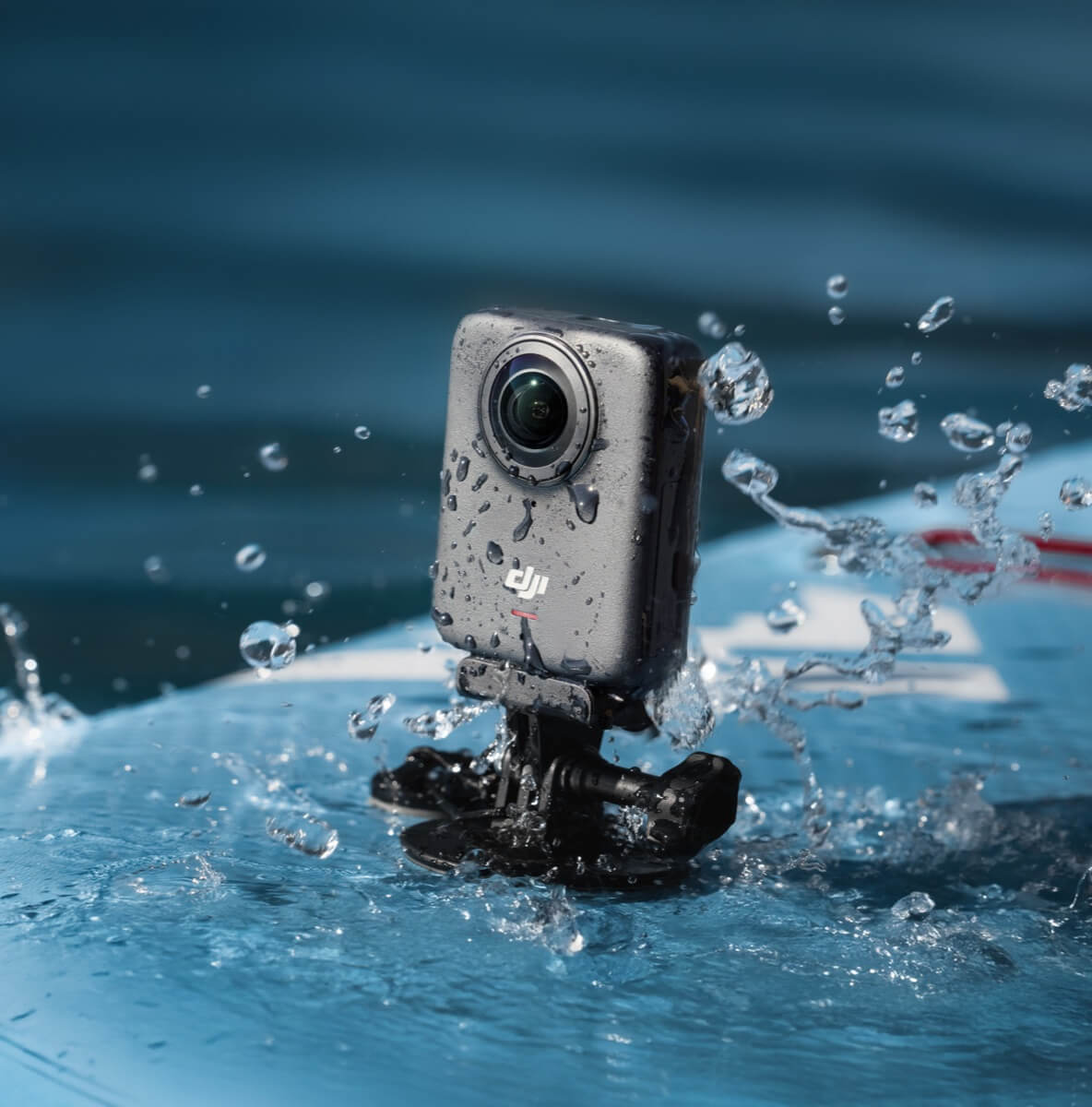On July 31, DJI launched the Osmo 360 worldwide, but not in the USA. Many YouTubers have posted their reviews already, and we’re planning on posting a written review after we’ve spent more time with the camera, but here’s a quick first look and some comments on the official press release.
The press release’s points are indented, with my comments following:
The Osmo 360 delivers the sharpest photos possible on the 360 camera market with 1-inch 360° imaging1. It is the first 360 camera to shoot ultra-high-spec 8K/50fps 360° video, and is the only 360 camera that can shoot continuously for 100 minutes in 8K/30fps2.
8K is an important spec point today, and though the Insta360 X5 and Kandao Qoocam 8K can both match the resolution, they can’t do it at 50fps. On “1-inch imaging”:
Specially designed for 360° capture, the Osmo 360’s industry-first square HDR image sensor maintains the same 360° image field as a traditional 1-inch rectangular sensor, while eliminating the unused area of traditional rectangular sensors. This results in 25% more sensor utilization, as well as outstanding image quality and lower power consumption, all in an ultra-compact, lightweight camera body.
Essentially, while most 360° cameras project the fish-eye image circle onto a 4:3 sensor and ignore the edges, DJI has used a custom square sensor to waste less space. This would be a 1” sensor if it was 4:3, though it’s actually a 1/1.1” sensor. The controlled conditions for continuous 8K/30fps recording are at 25°C (77°F) though you can expect the camera to overheat eventually if used in the summer sun.
The Osmo 360 is also the first 360 camera to feature native 8K/30fps 360° panoramic video with large 2.4μm pixels, boasting an industry-best run time of 100 minutes at 8K/30fps. The large pixel size – double the industry standard size of 1.2μm – captures more picture details, less noise, better low-light performance, and higher dynamic range. Also supporting ultra-high-spec 8K/50fps 360° video, Osmo 360 sets a new standard for video resolution in 360 cameras.
With an impressive 13.5 stops of dynamic range, combined with the larger pixel size and f/1.9 aperture, which significantly increases the amount of light intake, the Osmo 360 captures crisp, vibrant footage – even in low-light settings or high-contrast scenes like sunrise and sunset.
It’s great to see pixel size and dynamic range mentioned, and reviews seem to be bearing these claims out. Not mentioned here but important to video professionals: this camera offers 10-bit recording in a Log profile. Several more dot point claims:
Invisible Selfie Stick: The Osmo Invisible Selfie Stick vanishes from 360° videos with no editing needed, providing third-person views typically captured by a cameraman.
This is a feature of all 360° cameras; the overlap between the two lenses means that anything immediately between the two will be hidden.
High Frame Rate Video: For those that want to capture split-second details at a high frame rate, the Osmo 360 can also shoot in 4K/100fps 360° video.
Slow Motion: Capture video in up to 4x slow motion mode to make every awe-inspiring moment last longer.
You’ll have to choose if 4K/100fps or 8K/50fps is more important. As most 360° cameras can only just gather enough resolution to look great, I suspect 100fps will only be used when it’s really needed.
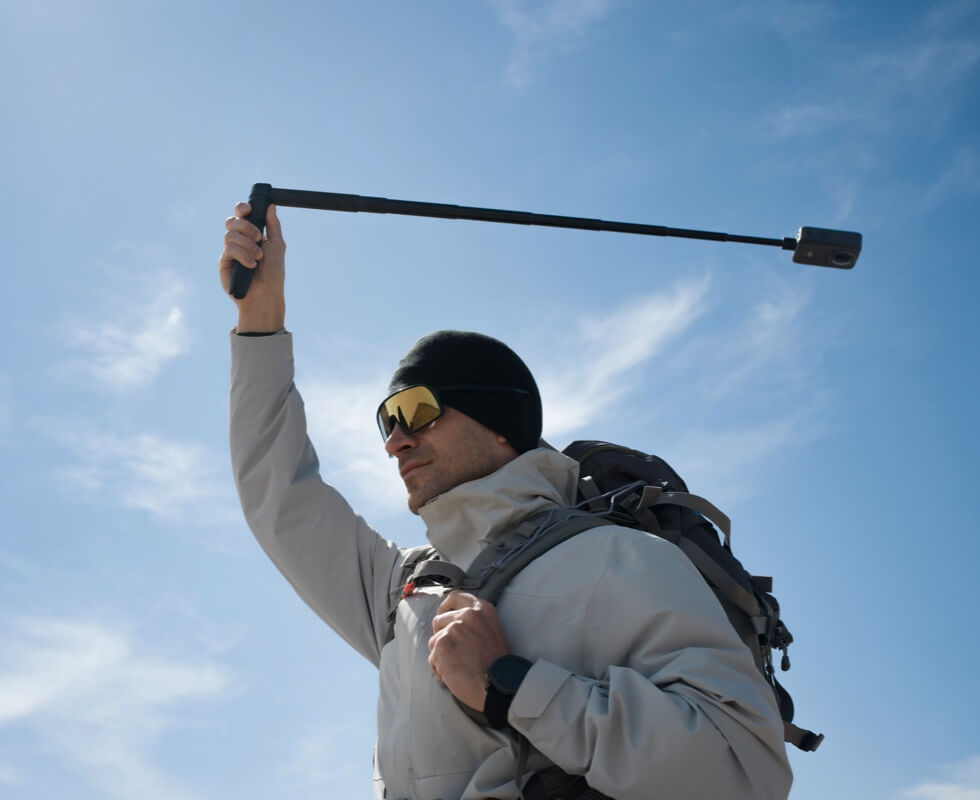
120 MP 360° Photo: To capture a single moment in time, users can take an ultra-clear 360° photo up to 120 megapixels, achieving razor-sharp detail for still images.
The native pixel resolution of the still images is 15520×7760 while the video resolution is 7680×3840, so I’m curious to see how good these still look. Early reviews have highlighted that only JPEG shooting is possible at this stage, with no RAW and no automatic bracketing, so this might not be the camera for virtual tour creators. We’ll definitely test this, though.
Gesture and Voice Control: Start or stop recording with a simple palm gesture, or use voice control to go hands-free.
Given that creators often leave the camera standing alone as they move around, these mechanisms could be handy — but app control is also possible.
HorizonSteady and RockSteady: With HorizonSteady enabled, the footage remains level no matter how the camera is rotated. In single-lens mode, RockSteady 3.0 effectively reduces shakes while retaining the dynamic impact of motion, delivering a more immersive first-person perspective.
Stabilization is both expected and required for 360° cameras, and it looks solid from what I’ve seen.
GyroFrame and Intelligent Tracking: DJI Mimo’s GyroFrame allows users to to adjust the 360° composition using motion control, while intelligent tracking makes it possible to lock onto and track people, vehicles, pets, and more.
Multi-Platform Editing Support: Edit videos with DJI Mimo or DJI Studio. DJI Studio offers a full suite of tools, and the Premiere plugin streamlines the workflow to create stunning 360° videos.
Tracking and desktop processing are important for many pro workflows, and DJI Studio tries to provide an equivalent offering to Insta360 Studio. I’ve downloaded and tested this already, and while it seems quite functional if you’re planning on editing in the app, there’s no way to batch process individual clips from camera-native to equirectangular. Instead, you have to add them to a timeline and export the timeline, giving a name each time. If you prefer to work with 360° footage in your NLE, this could be a hassle, but there is a Premiere Pro plug-in available. We’ll test this in our full review.
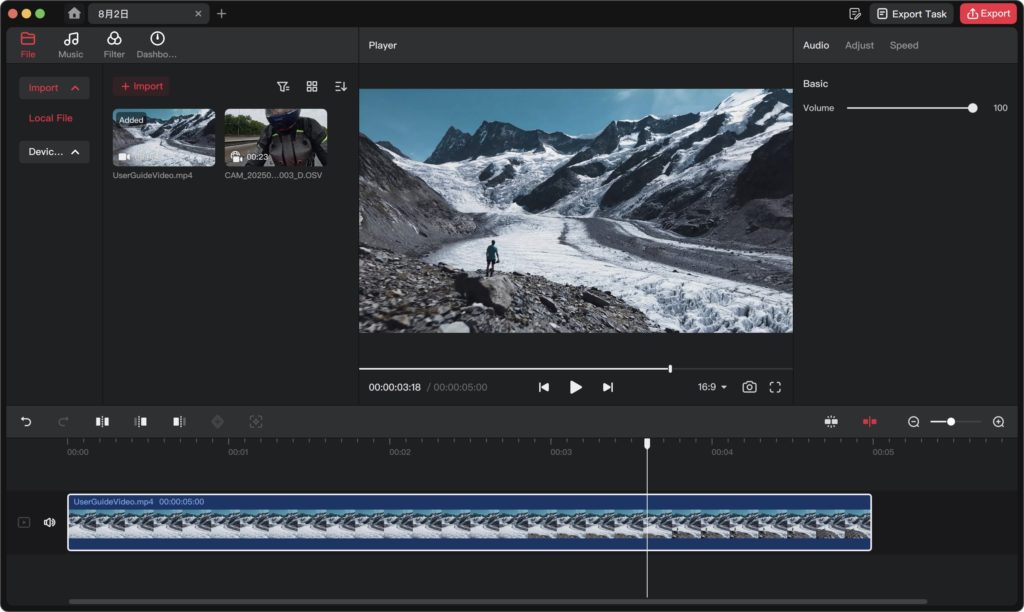
A few more points from the release:
Performance as a Single Lens Action Camera
Effortlessly switch between the front and rear lenses without stopping recording – perfect for capturing travel vlogs in one seamless take. Osmo 360 can be used as a first-person action camera with single-lens mode, offering crisp 5K/60fps flat videos with a sweeping 155° ultra-wide angle. Boost Video mode provides an even broader 170° field of view and smooth 4K/120fps video.
Recording just a single lens at a time could be handy for vloggers, and the increased resolution available could replace an action camera for some users. If this could be handy, you’ll probably want the tilting mount to make holding a selfie stick more comfortable.
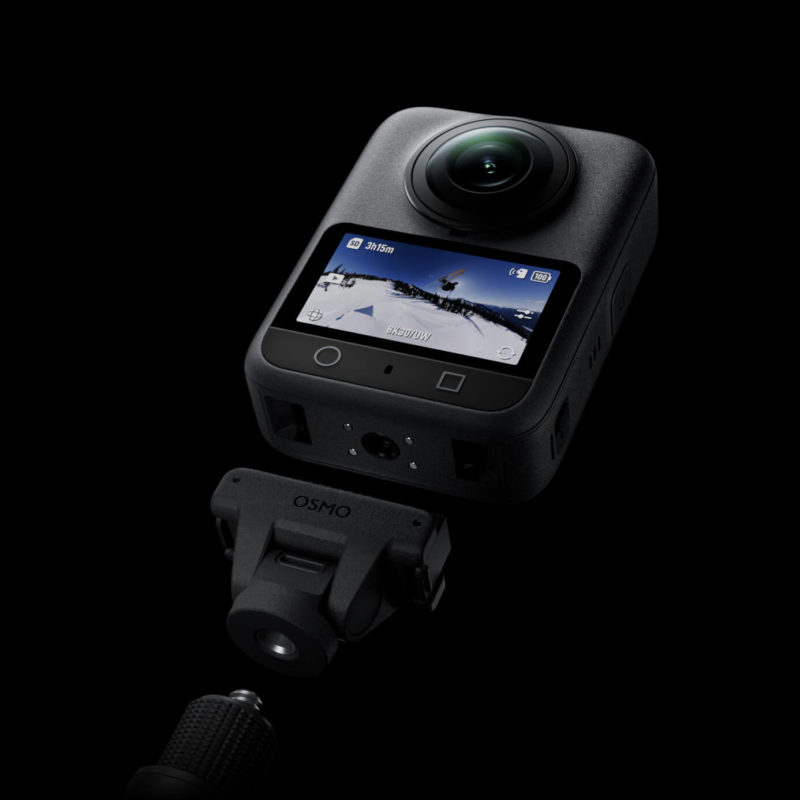
Convenient to Carry, with Long Battery Life
For creators on the go, Osmo 360 prioritizes convenience with 105GB of built-in storage. Weighing just 183g, the advanced stacked design allows the camera to pack two large 1-inch 360 imaging lens modules into one, ultra-compact body. Moreover, the Osmo 360 is built to thrive in extreme conditions, capable of recording for over 1.5 hours in freezing conditions as low as -20° C (-4° F)1. The battery can record continuously for 100 minutes1 at 8K/30fps resolution, which can be extended for another 180 minutes1 with the Osmo 360 Battery Extension Rod. In just 12 minutes, Osmo 360 reaches 50% power to ensure creators are never without a camera for long.
Built-in storage is always welcome; most of us will know the sinking feeling when we press record only to realize that the microSD card we thought was in the camera is still back in the reader at home. 183g is noticeably lighter than my Insta360 RS 1-inch 360 camera at 236g, and the extensive range of accessories gives many options.
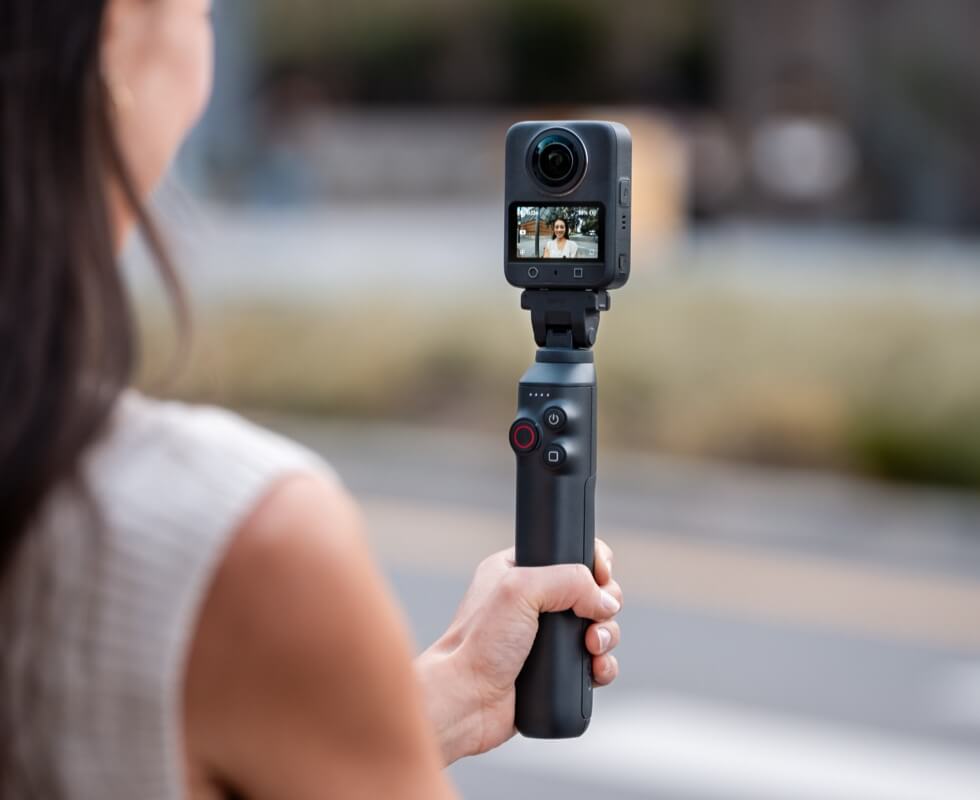
The Benefits of the DJI Ecosystem
Osmo 360’s magnetic quick release design works with Osmo Action series accessories, while also featuring a 1/4″ thread hole for easy compatibility with traditional gear.
Osmo 360 offers the OsmoAudio™ Direct Microphone Connection3, allowing users to connect Osmo 360 directly to two DJI microphone transmitters without a receiver, capturing studio-quality sound.
Ecosystem advantages are significant: if you have any existing DJI Action cameras, the magnetic mounts and batteries can be shared with this camera. Though a 1/4-20 on the camera body means you don’t need to buy a mount at all, a shared magnetic mount means easy swaps between cameras. There’s also no need for a receiver if you use a recent DJI Mic with this camera.
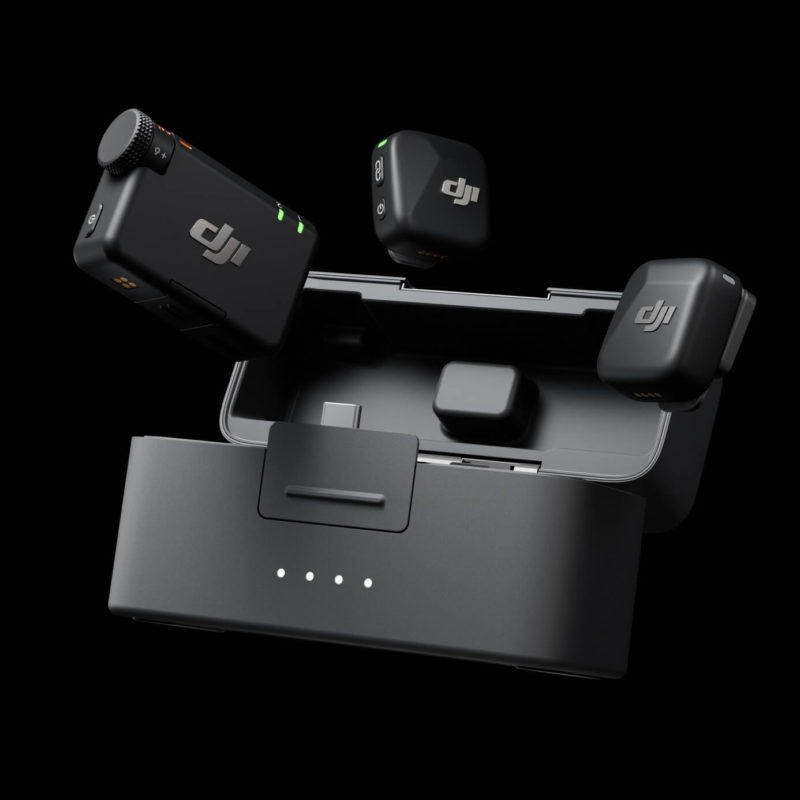
Price and Availability
The DJI Osmo 360 is available to order from store.dji.com and authorized retail partners, with shipping starting today, in the following configurations:
• Osmo 360 Standard Combo – 479.99 EUR
Includes Osmo 360, Osmo Action Extreme Battery Plus, Osmo 360 Protective Pouch, Osmo Lens Cleaning Cloth, USB-C to USB-C PD Cable (USB 3.1), Osmo 360 Rubber Lens Protector.
• Osmo 360 Adventure Combo – 629.99 EUR
Includes Osmo 360, Osmo Action Extreme Battery Plus, Osmo Action Multifunctional Battery Case 2, Osmo 360 Protective Pouch, Osmo Lens Cleaning Cloth, USB-C to USB-C PD Cable, Osmo Adjustable Quick Release Adapter Mount, Osmo 1.2m Invisible Selfie Stick, Osmo 360 Rubber Lens Protector.
The big news is of course that it’s not available in the US yet, likely as DJI is facing customs difficulties and tariff uncertainty. So far, some retailers have posted preorder links, at US549.99 for the Standard Combo and $699.99 for the Adventure Combo. If you’re in Australia (with no tariff and lower GST than the EU) they’re a little cheaper: AU$759/AU$989 at RRP.
In our upcoming review we’ll take a deeper look at this camera and some of its competition, comparing the Osmo 360 to the Insta360 RS 1” 360° camera, looking at still and video applications and sharing a few sneaky tricks to get the most out of any 360° camera. For now, here’s a video review from Hugh Huo:
